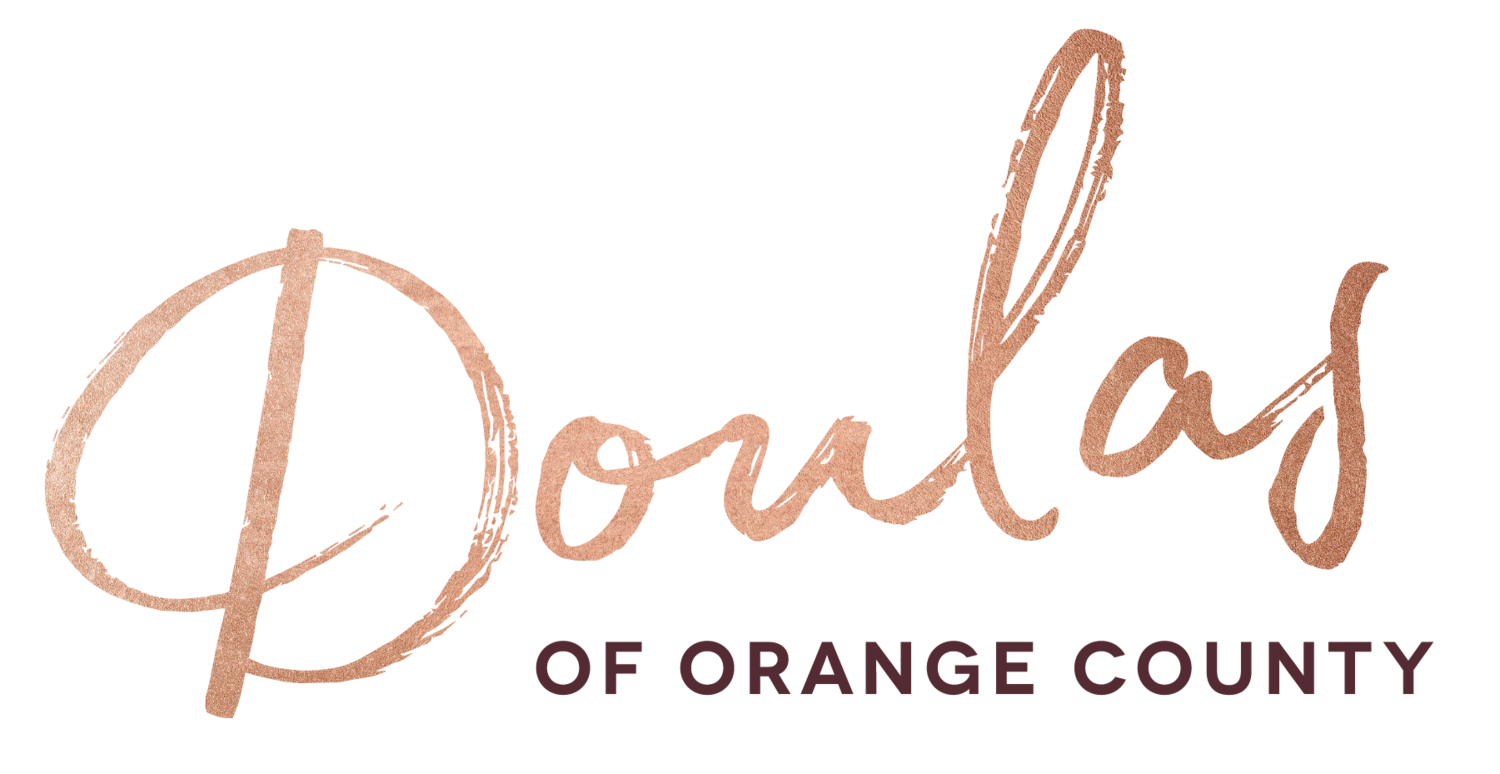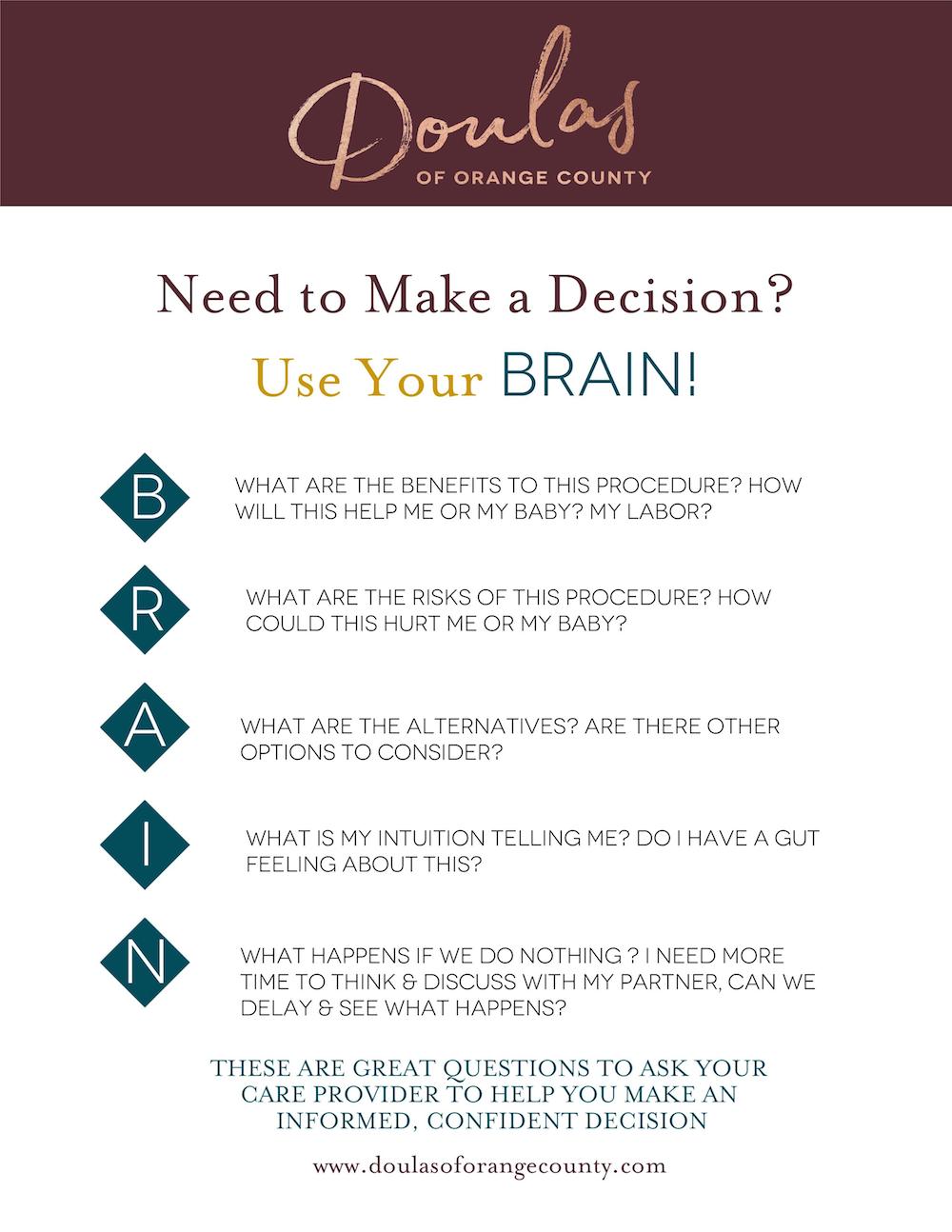You've taken the classes, you've read the books and you have created a birth plan complete with your personal preferences for your baby's birth. But as we all know, things don't always go as planned. And while we are big proponents of doing your research to establish some expectations, we also recognize that birth can be unpredictable.
Because of this unpredictability, we believe in the importance of being aware of your options as well as your right to informed consent and refusal.
What is informed consent and refusal you ask?
There are a few components to informed decision making specifically with regards to health care and childbirth.
First, your care provider must explain the following:
- The proposed treatment
- The condition for which this treatment is being proposed
- The type of treatment this involves
- Any risks associated with this treatment
- Any benefits associated with this treatment
- Any alternatives available to you
You should then be given the opportunity to ask questions and then give or refuse consent. Additionally, informed consent and refusal also includes your care provider ceasing a certain treatment if you withdraw consent in the future.
Ok, now that the legal mumbo-jumbo is out of the way, how does this apply to your decision making process during labor and birth?
Let's say that you originally you wanted your bag of waters to break on their own and that you had expressed that preference to your care provider. At some point in your labor, things begin to slow down and your OB or Midwife recommends an amniotomy or breaking your bag of waters. He or she explains that they are proposing to artificially (meaning it doesn't happen naturally or on its own) rupture your membranes to get baby's head to apply more pressure to the cervix and that this treatment will include a vaginal exam and the use of an amnihook (similar to a crochet hook with a small barb on the end to puncture the membranes). You know from your childbirth class that this is a common augmentation technique but all of the information you learned about the risks & benefits are gone in the ethers. What do you do?
Use your B.R.A.I.N.
This acronym is an easy way to remember how to utilize the process of informed consent and refusal while you're in the throws of labor. Let's walk through what this acronym stands for:
B is for Benefits.
R is for Risks.
A is for Alternatives.
I is for Intuition.
N is for need time or Nothing.
Once you've asked your questions questions relating to whatever the proposed treatment may be, if you need some time to make a decision it is entirely appropriate to ask for that. In some situations there may not be much time to explore your options in which case your care provider may indicate as such. However, if time is an option, you can request that your care provider leave the room and allow you and your partner and your doula to discuss your thoughts and make an informed decision.
As doulas, we can provide you with additional resources but we will not give our personal opinion in these situations. We are not medical professionals and cannot provide you with a professional medical opinion. However, your doula can be a great sounding board and help you compile the information & answers you've received to assist you in making the best decision for your and your situation.
Giving yourself space to think and process through the changes in your birth plan allows you to make decisions with confidence. By receiving the information you need, you are able to make the choices that are right for you and your baby.
Enjoy the free printable below! Print it out and pack it in your hospital bag as a quick reminder of what questions are good to ask when navigating the unexpected! Don't forget that you are amazing and you're going to rock this!

